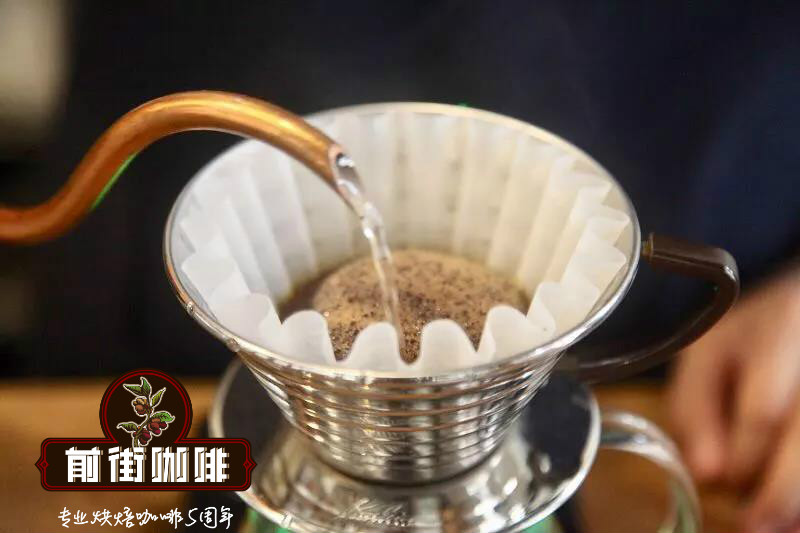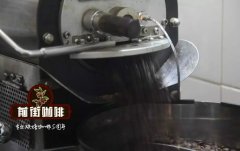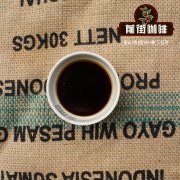Guatemala Atitlan Lake Coffee producing area introduces how to drink Guatemalan coffee?

Professional coffee knowledge exchange More coffee bean information Please pay attention to coffee workshop (Weixin Official Accounts cafe_style)
After the impact of the Kuroshio movement, people gradually began to have professional knowledge and technology related to the coffee industry. In addition to the annual large-scale coffee-related exhibitions in various countries, barista competitions, and the rapid changes in roasting equipment, our loyalty and love for coffee is no longer just satisfied with the current situation. For a professional coffee lover, there are many aspects to taste a good cup of coffee, among which the most profound key is the "micro-climate" of each producing area, which is the key to pulling a whole body.
In 1750, Father Jesuit introduced coffee trees to Guatemala, where German colonists developed the coffee industry in the late 19th century. Today, most of the coffee industry is produced in the south of the country. Here, the slopes of the Sierra Madre volcano provide ideal conditions for growing fine coffee beans, which grow at high altitudes. Critics prefer this blend of flavoured coffee with a spicy flavour to other types of coffee. The extra-hard coffee beans here are rare good coffee, it is full of particles, delicious, balanced acidity. Guatemala has also received attention for its giant coffee beans. The coffee industry, which once prospered the country, still dominates the national economy. Unfortunately, however, the political situation at home is not conducive to coffee growers. High output is usually a sign of overall economic prosperity in a country.
However, coffee production in Guatemala has now declined relatively, to only 700 kg/ha, compared with 900 kg/ha in El Salvador and a staggering 1700 kg/ha in Costa Rica. Guatemala coffee exports are controlled by private companies, but the National Coffee Council (Asociación Nacional de Cafe) controls other sectors of the coffee industry. Some of Guatemala's finest coffee is exported to Japan, where it sells for $3-$4 a cup. Most of the small-scale producers are descendants of Mayans, who like to be called natives.
They are also currently benefiting from a US-funded program known locally as "The Project," which plans to invest $2.5 million to encourage small, high-quality coffee plantations. The main regions of Guatemala that produce high-quality coffee are Lake Atitlan and Huehuentenango. The aim of the project is to help break the vicious cycle of high production and low quality that has plagued the world coffee industry. Bourbon trees, for example, grow taller and produce fewer beans than the new dwarf trees, and although they are both Arabica varieties, Bourbon trees produce better beans and are more popular with foodies. The project also hopes to encourage local producers to process coffee beans themselves, since most coffee cherries are now sold to middlemen, and the value and even quality of coffee could be improved if it could be processed in local factories.
Lake Atitlan is a volcanic lake formed by volcanic eruptions 80,000 years ago, with a depth of about 305m and an area of about 360 square kilometers. Lake Atitlan is located in the plateau at an altitude of 1,500 m, surrounded by Atitlan Volcano (3,535 m), Toliman Volcano (3,158 m) and San Pedro Volcano (3,020 m). Atitlan Lake is unforgettable in the morning, with a slight sunlight in the sea of clouds. The large temperature difference between day and night and strong afternoon winds are the unique micro weather of Atitlan Lake. The surroundings of Lake Atitlanc are recognized by ANACAFE(National Coffee Production Association of Guatemala) as one of the country's eight main coffee producing areas and one of the five volcanic areas. Coffee cultivated from organic soil is characterized by fruity and full aroma, ripe acid texture at the moment of entry, and immediately blooms in the mouth.
Since 1950, coffee has been planted here and this precious resource has been guarded by the descendants of Maya people who have lived here for generations. The four villages formed by Tzutuhil and Kaquchikel are the main ones. Up to now, they have entered the third generation of operation. [Blue Lake] is named after the lake beauty of Atitlan, representing the same pure atmosphere and elegant taste as here.
Delicious Science:
Generally speaking, Guatemala coffee has more fat,[Blue Lake] has more fat than other Guatemala coffees. High ripeness indicates carefully tended coffee cherries.
Cup test evaluation:
Black tea and lemon-like intense taste, with a sweet purity, full texture.
END
Important Notice :
前街咖啡 FrontStreet Coffee has moved to new addredd:
FrontStreet Coffee Address: 315,Donghua East Road,GuangZhou
Tel:020 38364473
- Prev

Guatemala Antigua Marguerite Coffee Flavor Why is Guatemala suitable for growing Coffee
Professional coffee knowledge exchange more coffee bean information please pay attention to the coffee workshop (Wechat official account cafe_style) Central America has a unique geographical environment, north and north America, south and south America border. Facing the Caribbean Sea and the Gulf of Mexico, the climate is relatively hot and humid, and it has always been an important coffee producing area in the world. Coffee has been driving Guatemala for more than a hundred years.
- Next

Katim, Yunnan? Yunnan red cherry sun treatment? What is it?
Yunnan Katim treatment method: red cherry sun treatment varieties: Katim altitude: 1450-1550 meters above sea level this variety is located in Yunnan between latitude 15 and the Tropic of Cancer, most areas are 1000-2000 meters above sea level, and the topography is mainly mountainous and sloppy. And large ups and downs, fertile soil, sufficient sunshine, rich rainfall, large temperature difference between day and night, these unique natural conditions formed Yunnan.
Related
- Does Rose Summer choose Blue, Green or Red? Detailed explanation of Rose Summer Coffee plots and Classification in Panamanian Jade Manor
- What is the difference between the origin, producing area, processing plant, cooperative and manor of coffee beans?
- How fine does the espresso powder fit? how to grind the espresso?
- Sca coffee roasting degree color card coffee roasting degree 8 roasting color values what do you mean?
- The practice of lattes: how to make lattes at home
- Introduction to Indonesian Fine Coffee beans-- Java Coffee producing area of Indonesian Arabica Coffee
- How much will the flavor of light and medium roasted rose summer be expressed? What baking level is rose summer suitable for?
- Introduction to the characteristics of washing, sun-drying or wet-planing coffee commonly used in Mantenin, Indonesia
- Price characteristics of Arabica Coffee Bean Starbucks introduction to Manning Coffee Bean Taste producing area Variety Manor
- What is the authentic Yega flavor? What are the flavor characteristics of the really excellent Yejasuffi coffee beans?

